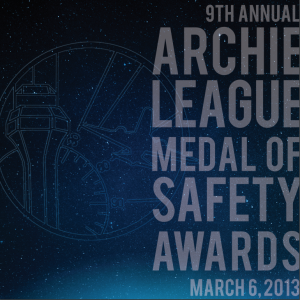
2013 – Winners of the 9th Annual Archie League Medal of Safety Awards, honored on March 6, 2013 at Rio in Las Vegas:
Alaskan Region: Ryan Williams, Anchorage Center

Second generation controller Ryan Williams has had several memorable days on the job at Anchorage Center (ZAN) since starting at the facility in 2006. But perhaps none like Dec. 29, 2012 when his skills were tested in assisting the pilot of a Cessna 172 Skyhawk (N4365L) that was headed to Wasilla, Alaska.
As this was Alaska, the list of challenges associated with the flight was substantial, and quite imposing:
• Pilot found himself stuck on top of an overcast layer.
• The four-seat, single engine aircraft was flying above the rugged Talkeetna Mountains.
• It was 5:45 p.m. local time in late December and therefore very dark.
• The windshield was frosting up and the pilot lacked de-icing equipment.
The pilot fully recognized the seriousness of his situation.
N4365L: Four three six five lima, I’m headed to Wasilla. I’m about thirty miles west of the field, at ten thousand feet, um, I’m in a little over my head I think.
Williams was able to radar identify the aircraft and provided a great deal of assistance, including weather reports, safe altitudes, and reports from other pilots, including ASA190.
ASA190: Yeah, I just thought I’d pass along a little bit of info for six five lima there, it looks real good towards Anchorage, um looks like there’s a overcast layer over towards over Wasilla. Maybe if he makes his way towards Anchorage he’ll be able to pick up the lights better.
Williams: November six five lima roger I also got another aircraft just coming out of Anchorage. I’ll get a few pilot reports for you and we’re gonna try to see if Anchorage Approach has anyone in the Wasilla area that can get a better report for you.
Above all else, Williams provided the pilot with a calm, confident voice. He reassured him he was not alone, he was clearly visible on radar, and he had someone keeping an eye on his situation.
With Ryan’s help, the pilot was able to find Wasilla and continue on to safety.
N4365L: Four three six five lima would like to resume VFR. I have Wasilla in sight. Thank you very much for your help.
Williams: November six five lima, you’re welcome, maintain VFR, and if you’d like you can remain on this beacon code, I can give you advisories to Wasilla.
N4365L: It’s pretty clear right now, I think I’m good. I’d like to buy you dinner if I could.
Williams: Appreciate that but not necessary. November six five lima squawk VFR and change to advisory frequency approved, if you need anything else, uh, frequency one three three point seven.
N4365L: Thank you sir, uh, squawking VFR.
BELOW: Watch the award presentation.
BELOW: Watch and listen to highlights from this save event.
Central Region: Kevin Cook and Steve Clark, St. Louis TRACON
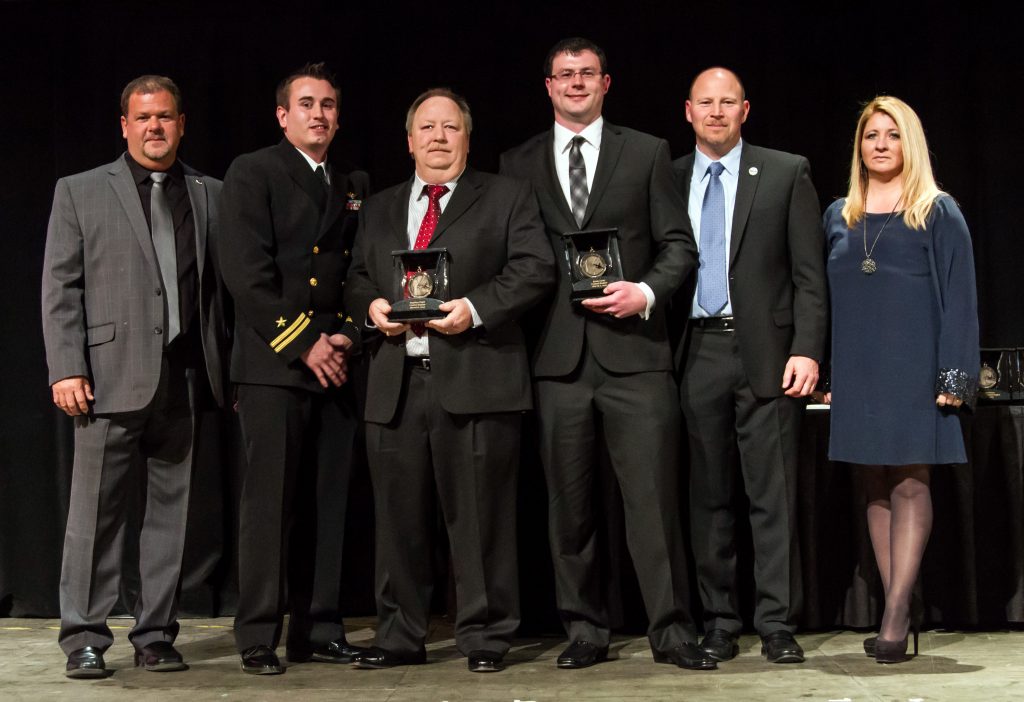
It’s challenging enough for an air traffic controller when a high-speed aircraft is enduring poor weather conditions, bad radio connection and communication issues. It’s even more so when that aircraft is experiencing a fuel emergency.
On April 4, 2012, St. Louis TRACON (T75) air traffic controller Kevin Cook was guiding an F18 (Empire 11) to Spirit of St. Louis Airport (SUS) when bad weather forced the aircraft to be redirected to Scott Air Force Base (BLV). But as Cook gave the directions for the approach to the pilot, communication between them was lost.
Several minutes passed before Cook learned the aircraft had missed the approach entirely. As the pilot requested to be redirected again, he declared that he had “minimum fuel” on board. Once again, the F18 missed his approach due to the weather conditions.
Cook redirected the pilot to a third airport, Lambert-St. Louis International (STL), which was reporting slightly better weather. Although the pilot agreed to land at another alternative airport, he was quickly forced to declare an emergency due to his aircraft’s lack of fuel.
As the pilot began to ascend to 10,000 feet, air traffic controller Steve Clark cleared the airspace for the stricken aircraft so that it could save gas and gain precious altitude. Without Clark’s efforts in making this airspace available, while also holding or redirecting any and all of the other aircraft he was responsible for, the F18 would have had an even more difficult time getting to STL and to safety.
The pilot soon requested to climb to 15,000 feet where the air is less dense so that he could glide through the air with less drag. This would help him preserve what little fuel the aircraft had left as he was now reporting an “extreme fuel emergency.”
With time running out, Cook decided to call an emergency airport surveillance radar (ASR) approach into T75 for the aircraft. Cook monitored and directed the aircraft on the final approach to the runway and provided a play-by-play descent onto the runway giving left and right course guidance. The pilot eventually made a safe landing in what was the nick of time.
A true example of teamwork, Cook and Clark did a remarkable job getting the pilot to a safe landing. What’s even more impressive is there are no published ASR approaches at T75. Therefore, the final ASR approach given by Cook was completely improvised under extreme pressure. The pilot later said that if he had missed the approach at STL, his next request would have been to be redirected to the Mississippi River to ditch his aircraft. Working together, Cook and Clark helped avert a disaster.
Eastern Region: Dave Giberson and Corey Grafe, Philadelphia Tower
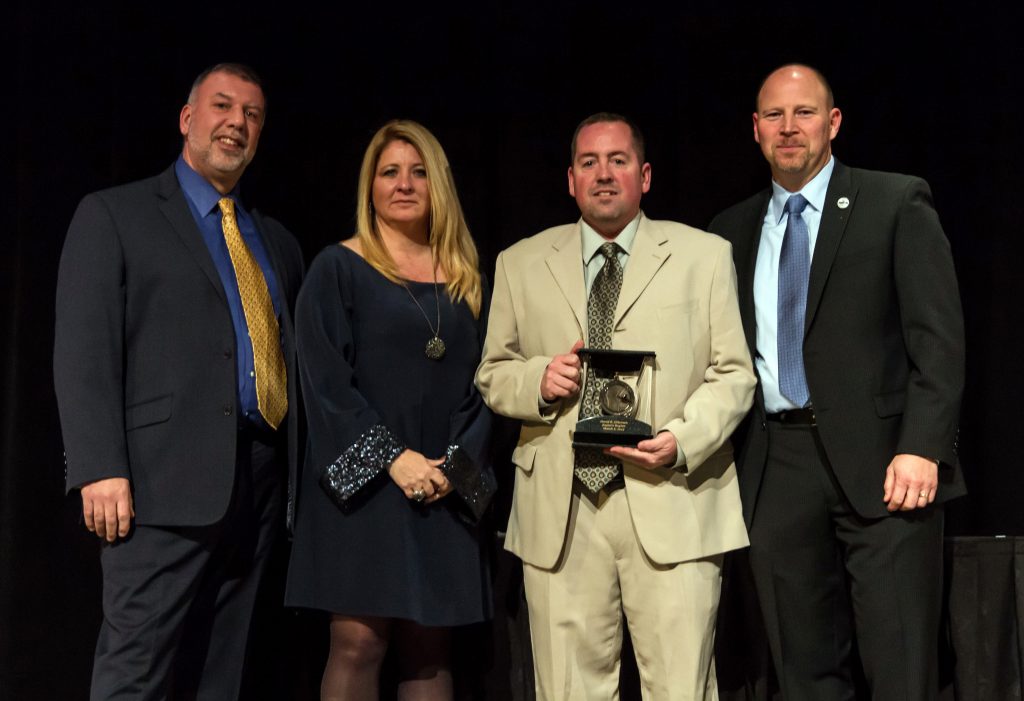
Just after 11 a.m. EST on March 1, 2012, Dave Giberson, 12-year FAA air traffic control veteran, was working Philadelphia International Airport (PHL) arrivals on the local control west position on an east flow (Runway 9R). The weather was overcast at 600 feet, with visibility of 1.5 miles and fog obscuring the first one-third of Runway 9R. Republic Airlines Flight 3137 was on a short final to Runway 9R as Giberson did a final scan of the runway using the ASDE-X ground radar. He noticed a target on the runway and advised the pilot. He asked him to execute a go-around as he couldn’t confirm or deny the target’s authenticity due to the fog. A second flight, AWE1512, then checked in on the frequency for the ILS Runway 9R, in response to which Giberson immediately canceled the aircraft’s approach clearance and issued climb-out instructions.
At the same time, Corey Grafe, a PHL air traffic controller of four years, was working the local control east position, responsible for departures off of Runway 9L. Grafe overheard Giberson send an aircraft around due to a target on the ASDE-X. As Grafe looked out the tower cab window, he spotted a black SUV speeding down Runway 9R.
While the entire tower cab tried to reach out to any airport vehicle, the SUV continued onto a taxiway, crossing Runway 35 and proceeding onto Runway 9L.
“We watched in horror as the vehicle drove all the way down Runway 9R, off the overrun, into the grass then onto Taxiway Sierra,” said Giberson.
Not knowing what the SUV would do next, Grafe withheld take off clearances and kept pilots updated on the events as they happened. When an aircraft in a holding position requested to taxi off the runway because the pilot didn’t trust the vehicle’s rogue operator, Grafe accommodated. Grafe also diverted take-offs for several other aircraft waiting to depart, and a few arriving aircraft that were sent around by Giberson.
The SUV continued all the way down Runway 9L and into the grass, where it was intercepted by the Philadelphia Police and airport personnel.
Investigations revealed that the driver had rammed a locked and secured perimeter gate to enter the airfield. An FBI agent later filed an affidavit that confirmed the man was driving on the runways at speeds in excess of 100 miles per hour, and airport personnel estimated Republic Airlines Flight 3137 was approximately 100 feet above the runway and one-quarter mile from the end of it when Giberson saw the SUV and diverted the flight. The driver confessed later that he was intentionally timing his drive so that the SUV would hit an aircraft as it landed.
The man was charged with driving under the influence, reckless endangerment, resisting arrest, defiant trespass, criminal mischief, aggravated assault, and simple assault. At a sentencing in October 2012, he received 16 months in prison and must pay $92,000 in restitution. Thanks to the swift and professional actions of Giberson and Grafe, this bizarre incident did not end in tragedy.
Great Lakes Region: Jeff Richards, Chicago Center
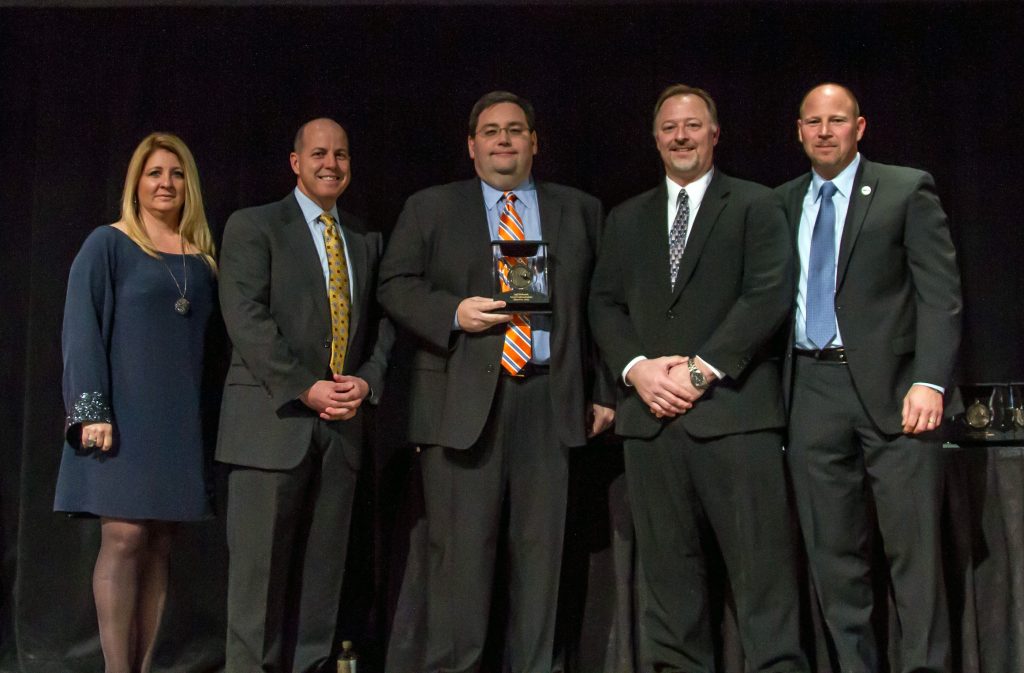
On June 29, 2012, 20-year air traffic control veteran Jeff Richards was working the LOGAN radar positions at Chicago Center (ZAU). N575RB, a Beechjet flying from Pellston, Mich., to Birmingham, Ala., checked on to the LOGAN sector level at 45,000 feet. The flight was encountering a horseshoe shaped line of severe thunderstorms that were moving east through northwest Indiana.
Shortly after the pilot’s initial check in, he requested a descent to 43,000 feet. As controllers were coordinating to allow for the aircraft’s descent, the pilot advised of the urgent need for a lower altitude and was observed commencing a descent. When queried, the flight crew advised Richards that they were declaring an emergency due to a dual engine flame-out.
Over the next 15 minutes, Richards provided the aircraft with calm and professional assistance as the flight descended in heavy precipitation and searched for the nearest airport where a landing attempt could be made. They then informed Richards that their landing would need to be made “no-flaps.” In response, Richards suggested the Marion, Ind. (MZZ) airport and informed them of the distance and direction from the aircraft as well as the runway type, length and configuration. The flight crew asked for another possible airfield as MZZ was also being affected by the inclement weather. Richards then quickly identified and described the Anderson, Ind. (AID) airport and guided N575RB with runway orientation and vector assistance toward and over the airfield until the pilots could see it.
During the time the flight was in the unpowered descent, the aircraft also lost navigation and transponder systems. Recognizing the many challenges the flight crew faced, Richards smoothly transitioned to tracking the flight through primary radar returns and retained voice communication until the flight stabilized on a visual approach to AID and the pilots were ready to make a frequency change. Thanks to his assistance, the aircraft landed without incident or injury.
“Jeff was able to draw from his on experience as both a controller and a corporate pilot to help guide the aircraft to a suitable airport. Jeff’s calm and confident assistance allowed the crew of N575RB to land safely and avoid a disaster,” said ZAU NATCA Facility Representative Toby Hauck.
New England Region: Erik Anderson, Boston ATCT
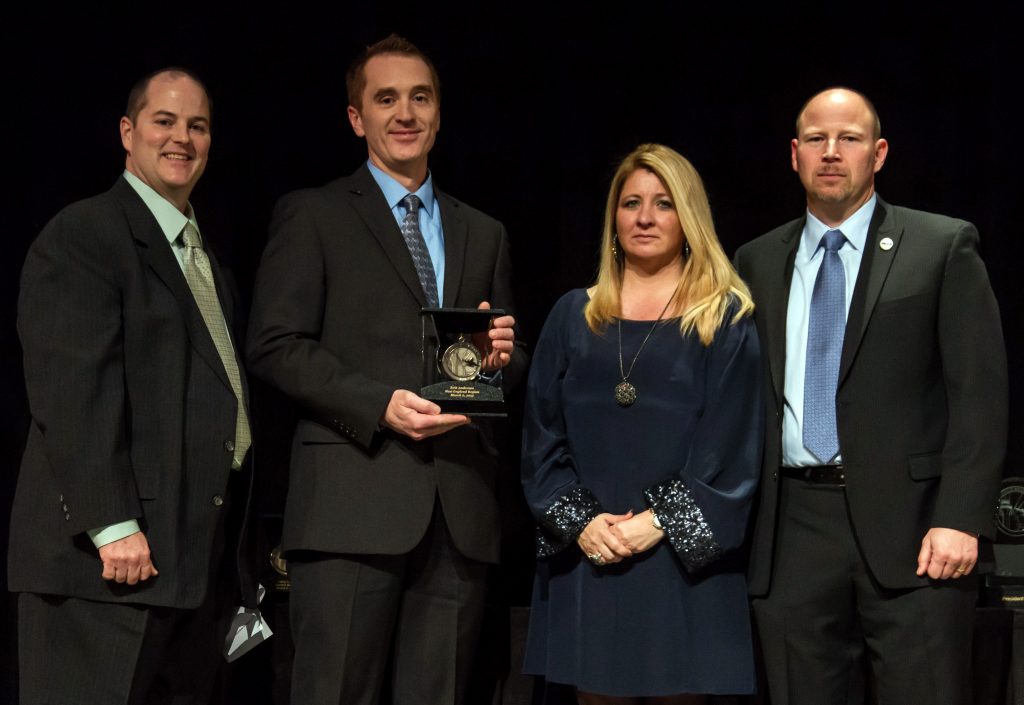
Erik Anderson is a 15-year veteran member and a second-generation air traffic controller. His father was a controller for many years at Boston TRACON before becoming a supervisor and retiring several years ago. Erik began his career in the Air Force and was stationed in Bosnia during that nation’s conflict in the 1990s. He then worked for the Department of Defense before being selected at Cape Approach (K90) in 1998, where he excelled.
But it’s been his decade of service at Boston Tower (BOS) where Anderson has made his biggest impact, according to member Jim Peterson, who nominated Anderson for this award.
Early in his BOS career, was Anderson played a key role in an incident in which an air carrier had been cleared for takeoff on Runway 33 Left. Anderson noticed an American Eagle SF34 that was moving towards the runway at an intersection downfield and did not appear to be stopping. It was too late to cancel the takeoff clearance but Anderson was able to get the SF34 to stop just a few feet before a collision.
In 2011, Anderson’s calm professionalism and skill helped ensure safe outcomes in two separate events: one involving an aircraft that reported a bird strike and had to return immediately to BOS, and the other in which Anderson alerted the local controller that an aircraft had taken a wrong turn towards Runway 22 Right and was not stopping. The takeoff of the second aircraft was aborted.
Anderson was nominated for this award last year after another event that showed, yet again, an extraordinary display of alertness and quick action that prevented a very dangerous situation from becoming potentially catastrophic.
On June 7, 2012, while conducting on-the-job training on the local control east position, Anderson noticed an American Airlines 737 heading towards Runway 4 Right (4R) as a Delta flight approached on short final. The American aircraft appeared to not be slowing to a stop. Anderson quickly got on the frequency to send the Delta jet around while the American 737 went onto the runway. His reactions were so quick that the Airport Surface Detection Equipment had not yet projected the problem.
“For him to be able to recognize that situation as he did before the ASDE-X went off is just outstanding,” said BOS Facility Representative Jim Peterson.
Anderson said he had noticed the aircraft taxiing “extremely fast,” and that after working at BOS for 12 years, he knows what kind of actions might signal an impending safety issue.
“Sometimes you just see things out of the corner of your eye,” he said. “You’re always watching. It was the perfect time for them to meet right at the critical point of the runway.”
Northwest Mountain Region: Donovan Carson, Portland TRACON
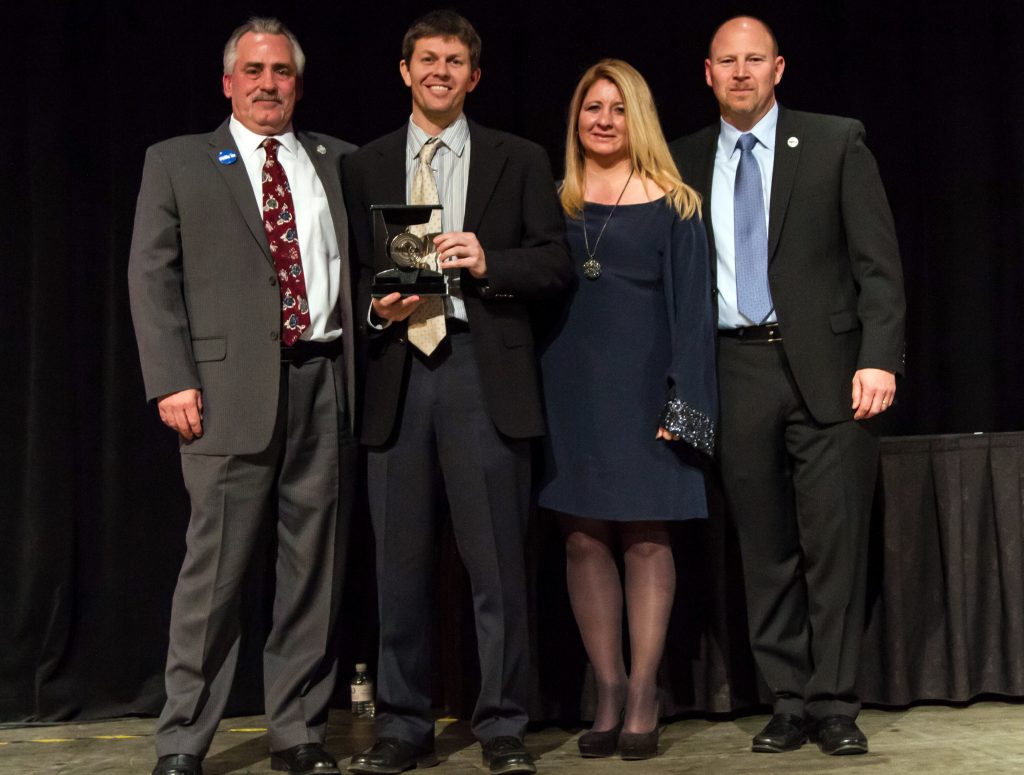
Donovan Carson has been a controller at Portland TRACON (P80) for almost three years, after transferring from Albuquerque Center. But he has quickly become an expert on the intricacies and challenges within the P80 airspace. His skill and knowledge were crucial when he helped save the life of the pilot of a Pilatus PC-12 on Dec. 11, 2012.
The single-engine turboprop was preparing to descend into Hillsboro (HIO), Ore., west of Portland, when Carson noticed that the aircraft was headed toward an area with known and charted hills and obstructions. Even though he had previously terminated radar service in order to transfer the aircraft to HIO Tower, he reinstated it when he noticed the pilot was off course.
Carson: November Zero Kilo Charlie, tell you what, you can remain with me. It looks like you’re going south of the final approach course.
The pilot was having trouble lining up on the final approach into HIO as he was instructed. He was supposed to intercept the final approach course. Instead, he went through the final and started maneuvering without instruction from air traffic control.
That became a serious problem when he went below 3,500 feet, the area’s minimum vectoring altitude (MVA) above the mountainous terrain. The pilot was having a difficult time controlling the aircraft and likely became disoriented due to poor weather conditions, including fog. As the pilot began making a turn to the northeast, he started to descend below the MVA and was in fact dropping rapidly through 3,000 feet, headed directly for the 2,500-foot peak of a mountain.
Carson knew the pilot was facing an immediate danger. Given the size of the aircraft and the high rate of speed at which it was traveling tragedy was likely just minutes away. Carson quickly alerted the pilot that his first priority needed to be climbing to a safe altitude. Within a few radar sweeps, the aircraft climbed from 3,000 feet to about 4,200 feet.
Carson then worked with the pilot to get him set up correctly for the approach, and started his descent to HIO. The anxious moments of the incident had given way to a safe, routine, and uneventful outcome.
“What impresses me about this scenario,” says fellow P80 controller Neil Miller, who nominated Carson for this award, “is the calming demeanor of the controller with a very nervous pilot in a dangerous situation. It’s difficult enough to control these aircraft when the pilots are doing what you expect. But when something out of the ordinary happens, both controller and pilot panicking will always make the situation worse. Instead, Donovan performed his job perfectly and with professionalism. NATCA should be proud of him. I believe he saved the pilot’s life.”
Southern Region: Bill Sullivan, Tampa ATCT
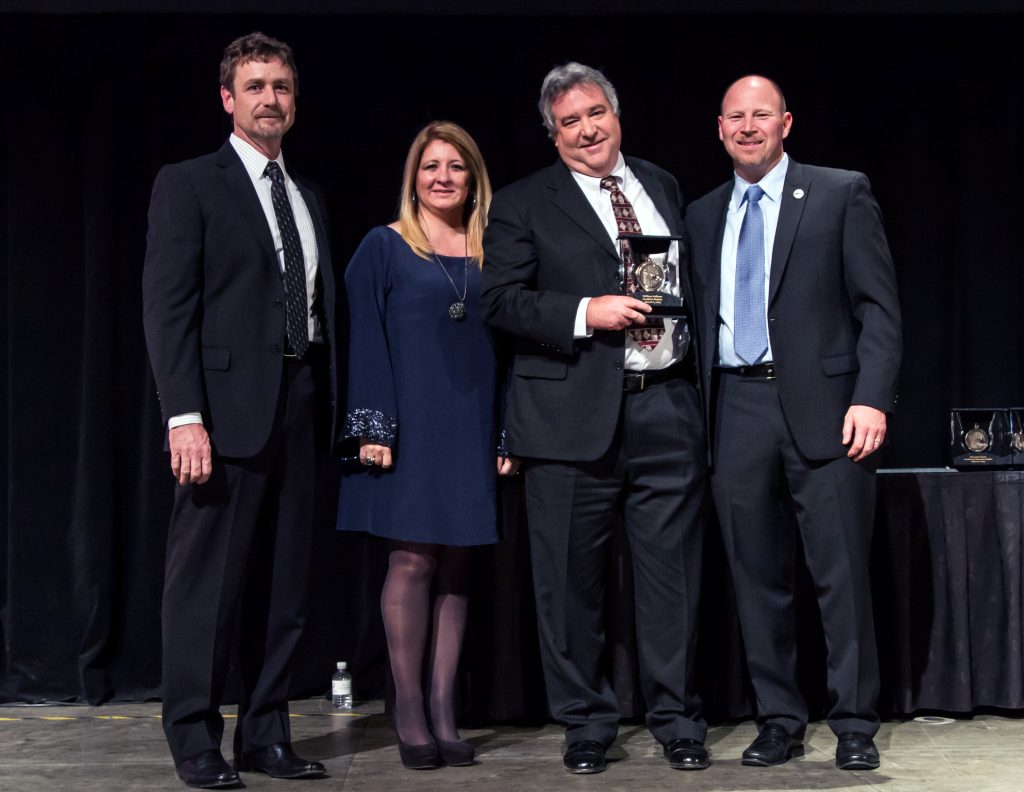
On March 1, 2012, air traffic controller Bill Sullivan was directing a Piper Malibu [PA-46, N377HC] from Tampa Executive Airport to Tampa International Airport (TPA). But shortly after takeoff, the pilot declared an emergency due to flight control problems.
N377HC: Seven Hotel Charlie we got an emergency.
Sullivan: Seven Hotel Charlie state the nature of the emergency.
N377HC: I’m losing my controls.
Sullivan: Alright sir, do you need, do you want to land at Tampa International? Do you want to land back at Vandenburg? Or where do you want to go?
N377HC: You tell me, I’m trying to get my act together.
Realizing his best plan of action would be redirecting the pilot back to Tampa Executive, Sullivan began giving him the necessary coordinates to return to the airport. At the same time, he began handing off some of his workload so he could focus on the situation at hand and ensure that the service to the other flights he was responsible for would not be degraded.
The pilot was in clear distress. His breathing became rapid and he was unable to communicate his situation with Sullivan as he attempted to steer the aircraft in response to the turns being issued.
Sullivan continued directing the pilot until he finally saw the airport.
N377HC: How much further is this airport?
Sullivan: Seven Hotel Charlie, at your 11-10 o’clock now in about two and a half miles. It’s just on the other side of that interstate, sir…
Sullivan worked for several more minutes to assist the pilot in finding the airport, repeatedly pointing out its proximity to the interstate.
N377HC: Seven Hotel Charlie, got it! Finally!
Sullivan: Okay, sir. You can go ahead and resume navigation to the airport.
N377HC: Don’t leave me; this ain’t over.
Sullivan: No, sir. I’ll be right here.
Sullivan stayed with the pilot until he landed safely. When the pilot did land, he asked Sullivan for a favor – could he place an important phone call? The pilot asked if Sullivan could call his wife and let her know that he was no longer going to be at Tampa International and would need to be picked up at Tampa Executive.
Sometimes, being an air traffic controller is more than just directing air traffic. Sometimes you might need to direct someone’s wife to an airport.
BELOW: Watch the award presentation.
BELOW: Watch and listen to highlights from this save event.
Click here for a transcript of the highlights from this save event.
Southwest Region: LouElla Hollingsworth, Fort Worth Center
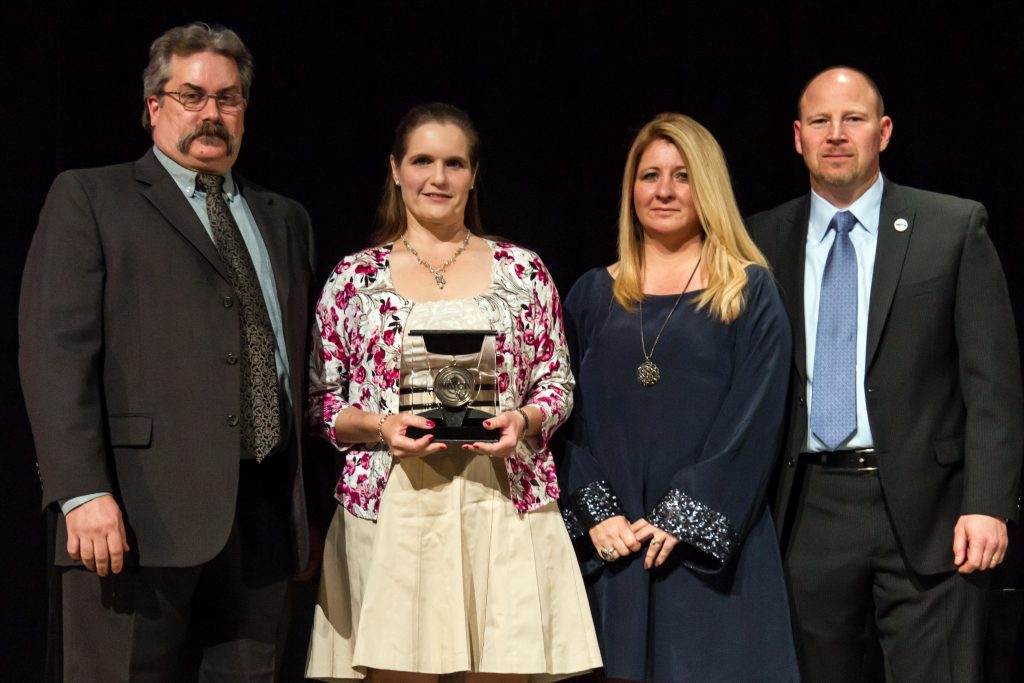
On Nov. 16, 2012, controller LouElla Hollingsworth was faced with a pilot flying a Piaggio P180 Avanti (N501PM) that was experiencing one of the worst and most unsuspecting conditions pilots can encounter when flying – extremely low oxygen levels known as hypoxia.
Hollingsworth first suspected something was wrong when she realized the aircraft was not climbing. She requested a climb, but the pilot did not respond. Instead, she heard just a ‘click’ sound on the radio frequency. She asked for a microphone check several times, thinking the pilot had a connection problem. When he did make verbal contact with Hollingsworth, his speech was slurred and he seemed to be incoherent. Hollingsworth had no previous flight experience herself, but knew this pilot was in trouble.
Hollingsworth: November five papa mike, I think you need to start a descent; can you do that for me? Descend and maintain flight level two four zero?
Another pilot noticed the situation and contacted Hollingsworth, “I don’t know if you can hear that guy, but he does not sound good… oxygen… oxygen.”
With no other options except to continue to keep communicating, Hollingsworth began to repeatedly advise the pilot to descend. She asked him to put on his oxygen mask in hopes he would soon respond and fly to a lower altitude.
Hollingsworth: November one papa mike, if you got the oxygen try that and descend and maintain flight level one eight zero.
At some point, the pilot strapped his oxygen mask on and immediately seemed more coherent when contacting Hollingsworth. She continued to direct and advise the descent, and then asked if he was doing better. The answer came as a relief.
N501PM: Yes we are, thanks for the help. For some reason the cabin altitude was showing okay but, it, uh, we had some oxygen issues so, down to, uh, eighteen or lowest we can get.
Hollingsworth: November one papa mike descend and maintain one four thousand, we’ll get you down there first and take a look at it and see. Let us know if you need to go anywhere else but you do sound a whole lot better. You were not sounding good at all earlier.
Hypoxia is a dangerous occurrence, and it’s often hard to distinguish. But throughout this event, Hollingsworth maintained a firm, calm voice until she passed the pilot to the next controller. The pilot continued the rest of his flight and eventually made it to his destination with no further problems.
View a transcript of the event highlights here.
MEDIA COVERAGE: Watch story from ABC News.
Western Pacific Region: Emily Birkland and Roy Teshima, Oakland Center
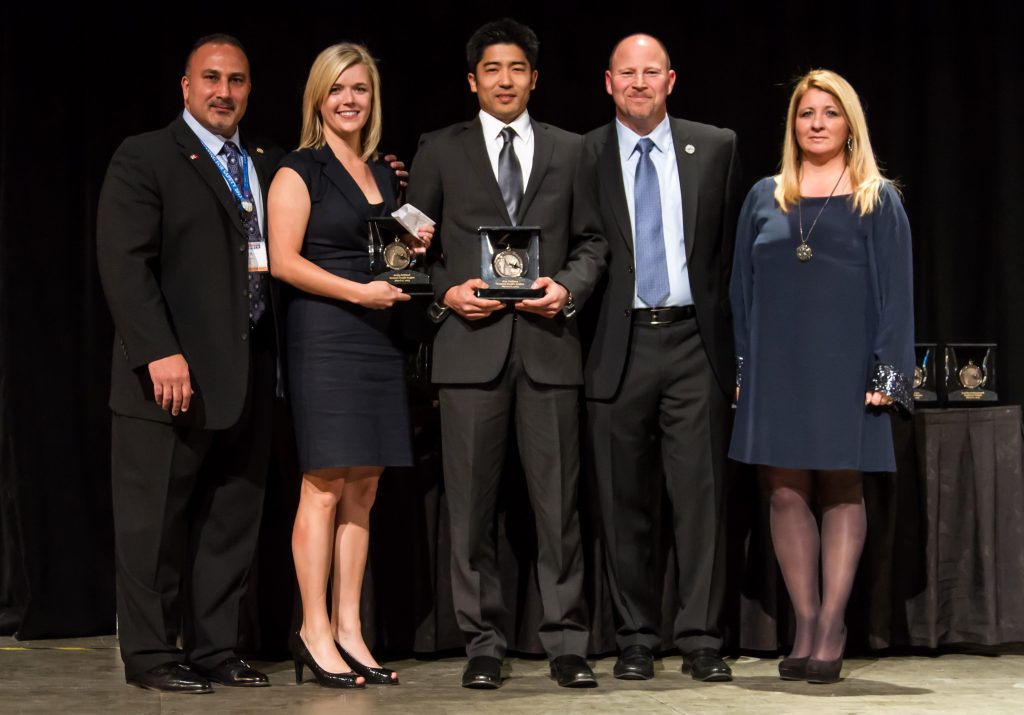
On the evening of September 9, 2012, the pilot of N80SS, a Cessna 185 floatplane, transmitted on the Oakland Center (ZOA) emergency frequency that he had executed a forced landing in the Pacific Ocean about 20 miles west of San Simeon, Calif. Pilot Stanley Shaw and his son Stanford Shaw were headed to their annual fishing trip in Alaska from the Los Angeles area on a Visual Flight Rules (VFR) flight when their aircraft suffered an engine failure. The aircraft and passengers had become trapped in a kelp bed with six to 10 foot swells, and a water temperature of about 50 degrees.
ZOA controller Roy Teshima and developmental Emily Birkland were monitoring the emergency frequency at Sector 10 and heard Shaw’s emergency transmissions. Birkland and Teshima were working a low altitude sector, whiich was moderately busy that day with a mix of VFR and Instrument Flight Rules (IFR) traffic, and included active restricted airspace. A large amount of inquiries and information being relayed back and forth through another aircraft, CPF420, and N80SS, increased the situation’s complexity. CPF420 was the first aircraft to relay to Birkland that he had heard the distress call of N80SS. Birkland confirmed she was aware and enlisted his help in finding the downed aircraft, which he located in about 18 minutes. Throughout the search CPF420 also relayed information from N80SS to Birkland, including the aircraft’s distance from San Louis Central Airport and that plane was going to flip over at any moment.
Due to low fuel, CPF420 had to leave the scene. Birkland then enlisted the assistance of the pilot of N4734K, who followed Birkland’s guidance to locate and keep relaying transmissions from N80SS. The pilot of N4734K was instrumental in relaying information from the downed aircraft to controllers and was the only resource available until the United Stated Coast Guard (USCG) (C6555) and California Highway Patrol (CHP71) rescue aircraft responded to the scene. N4734K remained airborne to assist as a communication relay with C6555 and CHP71.
Over the next two hours, Birkland and Teshima obtained information about the rescue through continuous communications with CPF420 and N4743K. The ZOA management team in the area forwarded the information to the ZOA Operations Manger, who coordinated with the USCG and other agencies.
Both father and son were positioned on one of the floats of the plane when rescued by the USCG, just moments before the floatplane inverted and sank. If the two had been forced into the Pacific Ocean they would have most likely succumbed to hypothermia in just 20 minutes. Thanks to the timely actions of the controllers and pilots involved, two lives were saved.
President’s Award: Bill Sullivan, Tampa Tower/TRACON
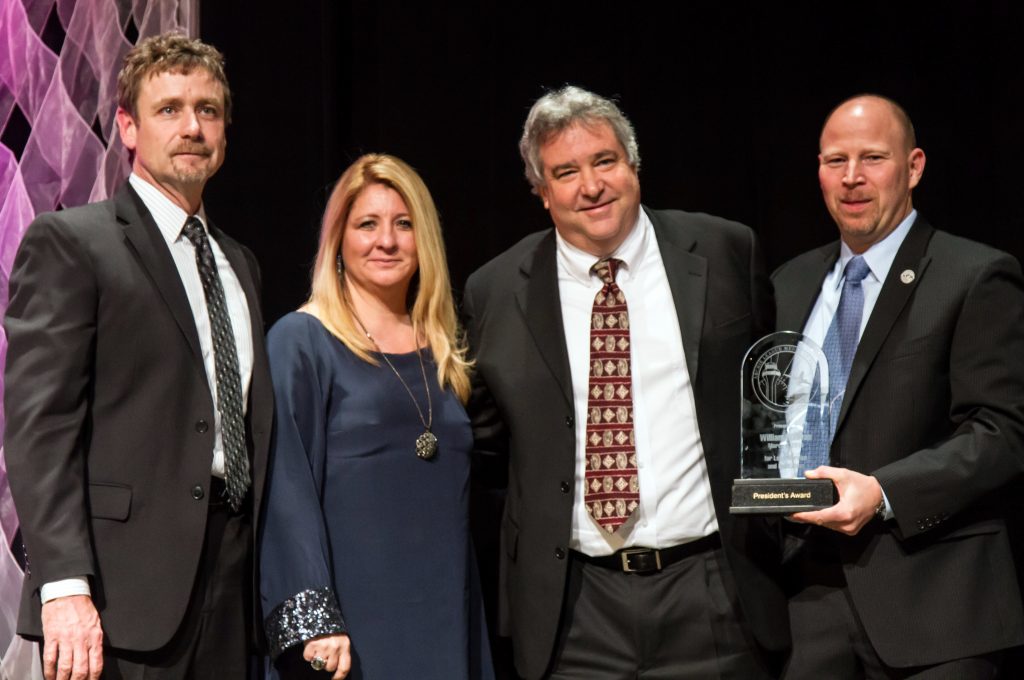
On March 1, 2012, air traffic controller Bill Sullivan was directing a Piper Malibu [PA-46, N377HC] from Tampa Executive Airport to Tampa International Airport (TPA). But shortly after takeoff, the pilot declared an emergency due to flight control problems.
N377HC: Seven Hotel Charlie we got an emergency.
Sullivan: Seven Hotel Charlie state the nature of the emergency.
N377HC: I’m losing my controls.
Sullivan: Alright sir, do you need, do you want to land at Tampa International? Do you want to land back at Vandenburg? Or where do you want to go?
N377HC: You tell me, I’m trying to get my act together.
Realizing his best plan of action would be redirecting the pilot back to Tampa Executive, Sullivan began giving him the necessary coordinates to return to the airport. At the same time, he began handing off some of his workload so he could focus on the situation at hand and ensure that the service to the other flights he was responsible for would not be degraded.
The pilot was in clear distress. His breathing became rapid and he was unable to communicate his situation with Sullivan as he attempted to steer the aircraft in response to the turns being issued.
Sullivan continued directing the pilot until he finally saw the airport.
N377HC: How much further is this airport?
Sullivan: Seven Hotel Charlie, at your 11-10 o’clock now in about two and a half miles. It’s just on the other side of that interstate, sir…
Sullivan worked for several more minutes to assist the pilot in finding the airport, repeatedly pointing out its proximity to the interstate.
N377HC: Seven Hotel Charlie, got it! Finally!
Sullivan: Okay, sir. You can go ahead and resume navigation to the airport.
N377HC: Don’t leave me; this ain’t over.
Sullivan: No, sir. I’ll be right here.
Sullivan stayed with the pilot until he landed safely. When the pilot did land, he asked Sullivan for a favor – could he place an important phone call? The pilot asked if Sullivan could call his wife and let her know that he was no longer going to be at Tampa International and would need to be picked up at Tampa Executive.
Sometimes, being an air traffic controller is more than just directing air traffic. Sometimes you might need to direct someone’s wife to an airport.
BELOW: Watch the award presentation.
BELOW: Watch and listen to highlights from this save event.
Click here for a transcript of the highlights from this save event.
Honorable Mention
CENTRAL REGION
Stephen Clark, St. Louis TRACON
Rich Salmen, Kansas City Center
Scott Lawniczak, Kansas City Center
Aaron Dunbar, Kansas City Center
Josh Brown, Kansas City Center
Nathan Burch, Kansas City Center
EASTERN REGION
Jonathan Kendall, Potomac TRACON
Casey Whittaker, Potomac TRACON
Jason Boyde, Philadelphia ATCT
GREAT LAKES REGION
Robert Mischke, Jr., Chicago Midway ATCT
Christopher Robinson, Chicago Midway ATCT
John Herlien, Chicago Center
David Schickram, Chicago Center
NORTHWEST MOUNTAIN REGION
Troy Lasnetske, Seattle-Tacoma ATCT
Joe Spencer, Seattle-Tacoma ATCT
SOUTHERN REGION
Brian Graham, Jacksonville Center
SOUTHWEST REGION
Gregory Blackford, Austin ATCT
Ashley Curtsinger, Houston Center
WESTERN PACIFIC REGION
Matthew Van Der Haeghen, San Jose ATCT
Frank Hernandez, Los Angeles Center
Edmundo Yepez, Los Angeles Center
Jim Thompson, Southern California TRACON
Rosa Serai, Honolulu Control Facility

